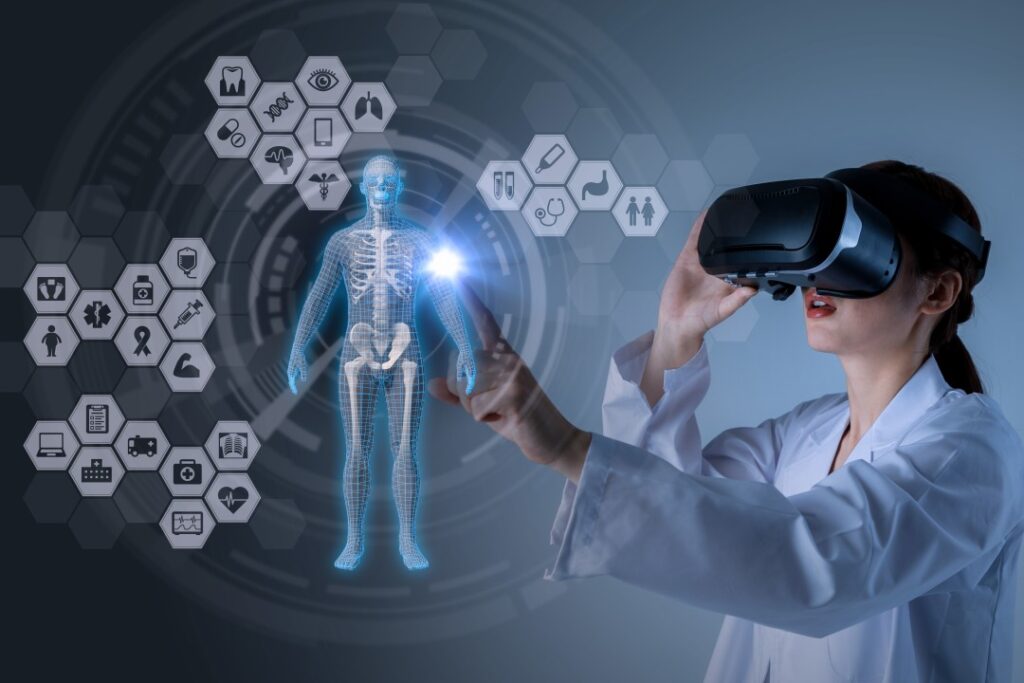In 2025, mental health therapy has entered a new era augmented and virtual reality (AR/VR) are no longer just gaming tools but powerful healing platforms. With rising stress, anxiety, and digital fatigue, therapists and developers are now exploring immersive technologies as a therapeutic bridge between mind and machine.
But how effective is it, really?
What Is AR/VR Therapy?
AR (Augmented Reality) adds digital overlays to real-world environments like showing calming visuals in your own room.
VR (Virtual Reality) immerses you in a fully digital world often used in controlled environments for therapy.
In mental health, these technologies are used for:
- Exposure therapy (e.g., fear of flying, PTSD)
- Social anxiety training (simulated interactions)
- Mindfulness & meditation in virtual nature
- Cognitive Behavioral Therapy (CBT) with immersive feedback
- Pain distraction during treatment or trauma processing
Real-Life Benefits of AR/VR in Therapy
1. Safe & Controlled Exposure
VR allows patients to face their fears in a safe, repeatable, and customized environment. For instance, someone afraid of heights can “stand” on a rooftop without actual danger.
Studies show that VR exposure therapy can reduce phobia symptoms as effectively as in-person treatment sometimes faster.
2. Accessible Mental Health Tools
Apps like TRIPP, Mindscape, or Psious offer guided meditation, stress relief, and emotional tracking in virtual spaces available from the comfort of home.
In a world where waitlists for therapists are long, VR provides a useful interim support system.
3. Increased Engagement
Therapy can feel abstract VR/AR makes it interactive, visual, and sensory, improving attention spans and emotional connection.
4. Gamified Healing
Mental health games using VR reward users for practicing calm breathing, confronting fears, or sticking to routines. This keeps younger patients especially motivated.
Limitations & Concerns
- Cost & Accessibility: Devices like Meta Quest 3 or Apple Vision Pro aren’t affordable for everyone.
- Data Privacy: Mental health data collected via immersive tools needs stronger regulation and encryption.
- Overreliance on Tech: VR is a tool not a replacement for trained mental health professionals.
- Motion Sickness or Fatigue: Prolonged VR sessions can be disorienting or tiring for some.
Case Studies & Real-World Use
- UK’s NHS is trialing VR for psychosis patients, helping them practice real-world social scenarios.
- Veterans Affairs (VA) in the U.S. uses VR to treat PTSD among war veterans with high success rates.
- Startups like Limbix offer VR kits for therapists treating teen depression and anxiety.
Popular AR/VR Therapy Apps in 2025
| App | Use | Platform |
|---|---|---|
| TRIPP | Meditation, mindfulness | Quest, iOS/Android |
| Psious | Phobia & CBT therapy | VR headsets |
| XRHealth | PTSD, ADHD, anxiety | Clinical VR |
| Mindscape | Guided VR therapy | Quest, browser |
| Oculus Quill Theater | Relaxing VR storytelling | Meta Quest |
So, Is It Effective?
Yes, AR/VR in mental health therapy is effective especially as a complementary tool to traditional therapy. It can reduce symptoms, increase comfort with exposure, and offer alternatives to underserved communities. But like any therapeutic approach, it works best when guided by licensed professionals and used mindfully.
Final Thoughts
The future of therapy is immersive, interactive, and deeply personal. Whether you’re a practitioner, a tech enthusiast, or someone exploring options for healing AR/VR tools are worth watching (and trying). As we digitize more of our lives, perhaps healing through a headset isn’t so strange after all.
